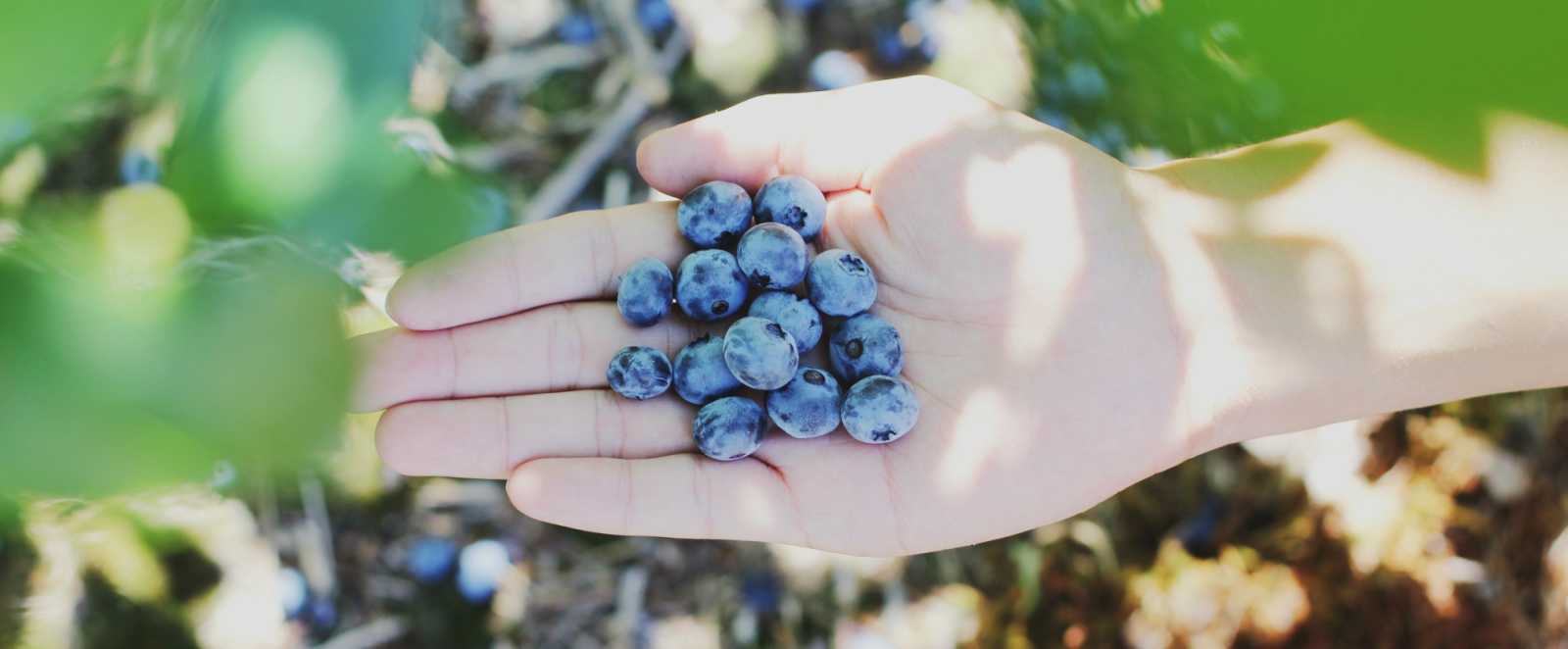In the diet - keep to those things that heal within and without. A great deal of celery, lettuce, tomatoes, and especially use the garden blueberry. (This is a property which someone, some day, will use in its proper place!)
-- Edgar Cayce reading 3118-30
This Edgar Cayce reading excerpt from 1943, alludes to special health benefits from eating garden blueberries. In her 2016 article about this Cayce reading, noted health author Elaine Hruska mentions many health benefits from eating blueberries and discusses antioxidant flavonoids in blueberries.1 Hruska explains that antioxidants are compounds that decrease the impact of unstable damaging chemicals that end up in our bodies. She ends her discussion by wondering whether these flavonoids are the special property mentioned in the reading. Many researchers have been investigating these healing antioxidant compounds since the 1970s, trying to identify a mechanism of action. This month, scientists in the internationally respected journal Science have published an article showing how our bodies actually metabolize one of these antioxidant flavonoid compounds found in blueberries to indeed “heal from within” and combat flu infections.2
Flavonoids are substances found in plant pigments, like the deep purple-blue of a blueberry, that help protect the plant from disease. Research is showing that eating many different types of these plant flavonoids help protect us from disease, too. Scientists in this study were able to demonstrate the interaction between the healthy bacteria living in our digestive system and these flavonoid compounds. Plant-based foods are known to be healthy, but we are just now learning the complicated mechanism by which we benefit from plant antioxidants. The key is our gut microbiome, the 100 trillion bacteria that live in our digestive systems, some of which transform flavonoids into active chemicals. The scientists were able to identify one helpful bacterium living in most of us, Clostridium orbiscindins, that is involved in flavonoid metabolism. These bacteria process the flavonoids in blueberries into desaminotyrosine or DAT, a chemical that acts directly on human and mice immune systems to improve the body’s ability to destroy viruses. They found that DAT prevented mice from being infected with a flu virus and observed that the presence of this chemical significantly decreased the amount of lung damage in mice that were later infected with a flu virus. It seems that not only can eating blueberries strengthen the immune system against viral infection, eating these flavonoids helps decrease the lung damage done by the virus if someone is later infected.
Influenza is dangerous and deadly. Edgar Cayce lived through the 1918 flu pandemic that killed approximately 500,000 Americans in one year. Now we understand that flu comes from viral infections that can be controlled with hygiene, medical support, and isolation, and the number of deaths has dropped. The Centers for Disease Control (CDC) estimate that in recent years, there have been an average 34,000 flu-related deaths per year in the United States alone. Influenza hits hardest in older adults, pregnant women, young children, and those with chronic health problems like COPD, asthma, and heart disease. CDC states that flu vaccines, though used by fewer than 30% of Americans, prevent more than 3000 U.S. deaths and 71,000 hospitalizations each year.3 Antibiotics, on the other hand, make influenza worse by killing the helpful gut bacteria that are instrumental in stimulating the immune system’s anti-viral weaponry.
More than 80 years ago, Cayce readings (like 348-25) recommended probiotics such as yogurt and kefir, so trendy in 2017, to help people increase the number of healthy bacteria in their digestive systems. The readings recommended a clean, green, and organic diet: eat local, organic food and drink plenty of water; eat mostly vegetables, fruits, nuts, and whole grains. Choose seafood, poultry, small (or no) amount red meat. Avoid fried foods, soft drinks, sugar, processed foods, and preservatives. Drink less alcohol. You may want to wash those blueberries down with some red wine (in moderation!), red or black grape juice, or black tea; all are also high in flu-fighting flavonoids. Improving our diets—adding more organic blueberries—has been shown to increase the number of healthy bacteria in our digestive systems.4 Foods that are “good for us” are good for the bacterial friends living inside our digestive systems. We’ll never know exactly what special “property” the reading referred to, but these scientists have certainly confirmed the blueberry’s healing powers.
1. https://content.edgarcayce.org/about-us/blog/blog-posts/the-mystery-of-the-blueberry/, accessed 08/08/2017
2. http://science.sciencemag.org/content/357/6350/498, accessed 08/08/2017
3. https://www.cdc.gov/flu/about/disease/2015-16.htm, accessed 08/08/2017
4. Wu, G. D.; Chen, J.; Hoffmann, C.; Bittinger, K.; Chen, Y.-Y.; Keilbaugh, S. A.; Bewtra, M.; Knights, D.; Walters, W. A.; Knight, R.; Sinha, R.; Gilroy, E.; Gupta, K.; Baldassano, R.; Nessel, L.; Li, H.; Bushman, F. D.; Lewis, J. D. (2011). "Linking Long-Term Dietary Patterns with Gut Microbial Enterotypes". Science 334 (6052): 105–8.







